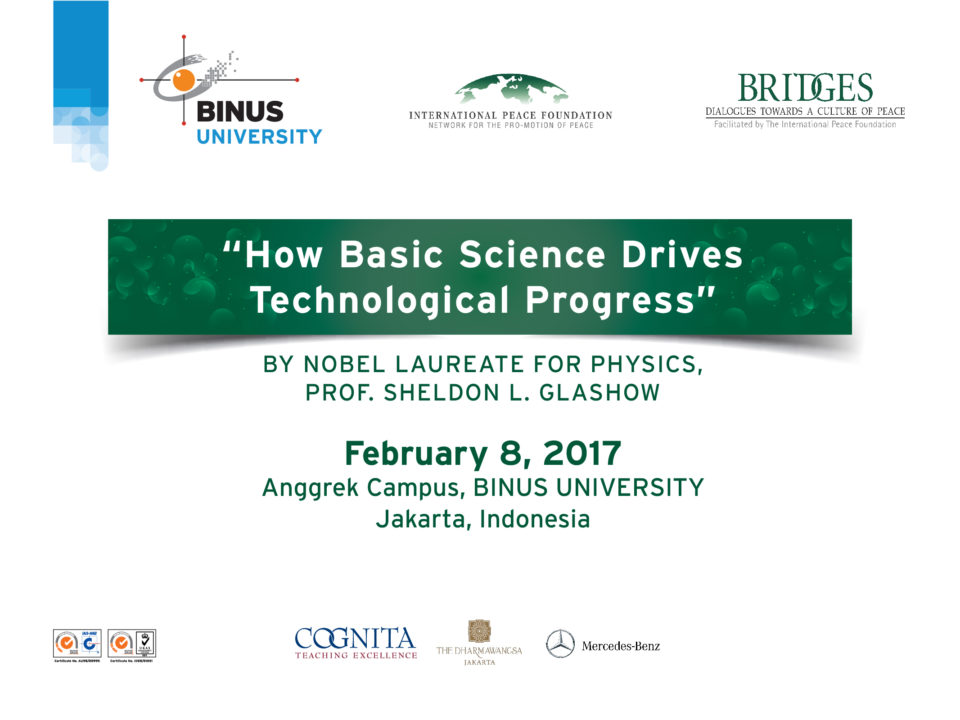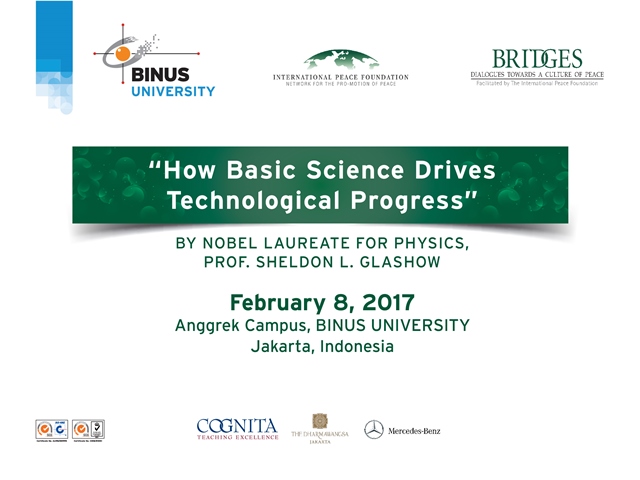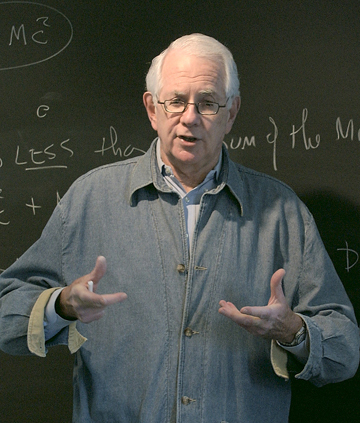Partnering with the International Peace Foundation


BINUS UNIVERSITY is proud to announce its cooperation with the International Peace Foundation, through which the university will host an esteemed Nobel laureate on February 8, 2017 as part of the foundation’s 6th ASEAN event series titled “Bridges – Dialogues Toward a Culture of Peace”. The International Peace Foundation has since 2003 presented numerous “Bridges” events across the ASEAN in countries such as Thailand, the Philippines, Malaysia, Cambodia, Vietnam and Singapore. In serving as one of the partner institutions for the 6th ASEAN event series, BINUS UNIVERSITY has the honour of playing an integral role in welcoming the “Bridges” program to Indonesia and views this cooperation to be a key step forward in the country’s continued development within the fields of education, research, employment and intercultural dialogue.
The International Peace Foundation creates an independent, non-profit platform for dialogue and humanitarian support. In particular, the Vienna-based foundation is focused on spurring research into conflict prevention and the promotion of peace activities. The keynote speaker scheduled to headline the forum at BINUS UNIVERSITY as well as meet with students at BINUS SCHOOL Simprug in February 2017 is Prof. Sheldon L. Glashow – an esteemed figure in the global academic community renowned for his contribution to the field of physics, for which he was awarded a Nobel Prize in 1979. Prof. Glashow will speak on the importance of science in driving technological progress as well as the significance of research motivated by curiosity and the desire to understand nature. BINUS UNIVERSITY through its continued internationalization and promotion of social responsibility, science, and technology serves as the ideal partner institution to initiate discourse on this topic in Indonesia.
Through this partnership, BINUS UNIVERSITY hopes to influence Indonesia’s young demographic as the country takes steps to solidify its competitiveness amid rising regional integration. Contributing to efforts aimed at ensuring peace, stability and security for the country will enhance further sustainable cooperation between local organizations and their global partners, and drive Indonesia’s burgeoning reputation as an influential hub for business and investment.
Stream live at http://www.binus.tv/live-streaming-event/ at 13:30-16:30 (GMT+7) on February 8 or watch on BINUS TV YouTube Channel.

ABSTRACT:
How Basic Science Drives Technological Progress by Prof. Sheldon Lee Glashow
Boston University & Harvard University, emeritus
Applied Research seeks to address societal or commercial goals by creating new and better technologies. Edison found it to be 1% inspiration and 99% perspiration. On the other hand, Basic Research is undirected, curiosity-driven and motivated by the desire to understand nature. Doing it can be lots of fun. I shall discuss how these disparate approaches to science reinforce one another.
A century ago, Bohr, Heisenberg, Schroedinger and their friends set out to understand atoms, whose constituents, electrons and nuclei,
had just been discovered. By 1926 they had created the new science of quantum mechanics. Think of how happy they were when their theory explained the structure and properties of atoms and provided the basic rules governing chemistry. The founders of quantum mechnanics did not commercialize their ideas. They made no non-compete agreements, no patents, no start-up companies and not one product. Yet, today a third of the American economy depends explicitly on quantum mechanics. Without it there could be no MRI or PEP scanners, no lasers, no LCDs, no smartphones, no video games, no ipods and no ipads. Neither could there be video games, fantasy football, debit cards, laptops, GPS systems, solar panels, and so on and on.
The converse is also true. New technologies foster advances in basic science. For example, the discoveries of X-Rays, Radioactivity and the Electron toward the end of the 19th century depended crucially on the technologies developed by three engineer-scientists: Geissler’s gas discharge tubes, Ruhmkor’s spark coils and Daguerre’s photography. More recently, modern research in many sciences | from studies of twin primes to those of Higgs bosons, from genetic medicine to geneology, from cosmology to climatology | depend on the development and deployment of ever more powerful computers.
SHORT BIOGRAPHY
Prof. Sheldon Lee Glashow was awarded the 1979 Nobel Prize for Physics together with Prof. Abdus Salam and Prof. Steven Weinberg for their complementary efforts in formulating the electroweak theory which explains the unity of electromagnetism and the weak force. Throughout his career Professor Glashow has done seminal research in the fields of elementary particle physics and cosmology, having worked at the Universities of Houston and Boston since 1982 and before at the University of California at Berkeley since 1961. His work led to the prediction of neutral currents, charmed particles and intermediate vector bosons, and he played a key role in unifying the weak and electromagnetic forces and in creating today’s successful standard model of particle physics. More recently Professor Glashow has devised novel tests of Einstein’s special theory of relativity, proposed an intriguing form of the neutrino mass matrix and has excluded the possibility of a universe that is matter-antimatter symmetric.
For more information regarding the International Peace Foundation and its programs, please visit the foundation’s website: www.peace-foundation.net.

